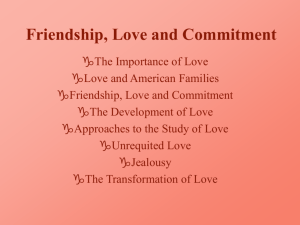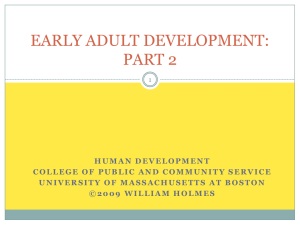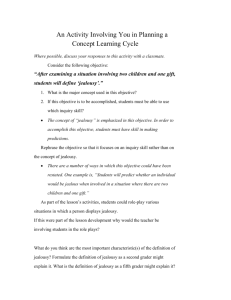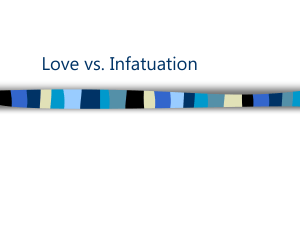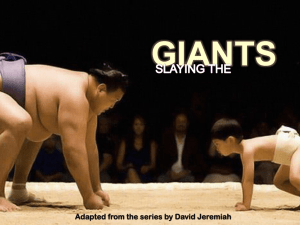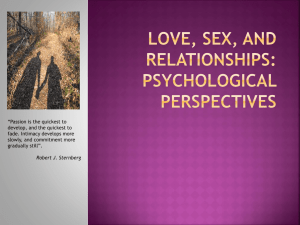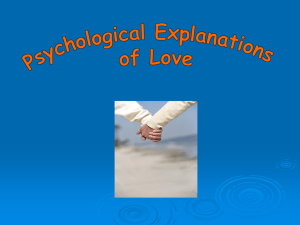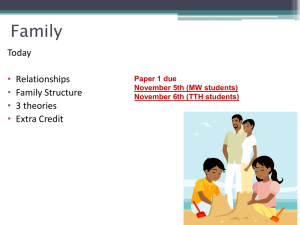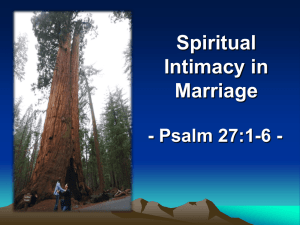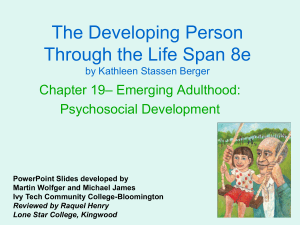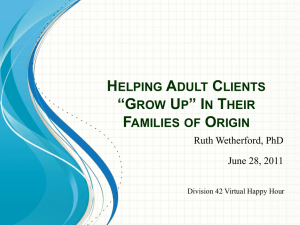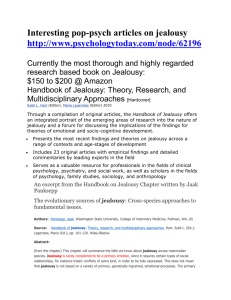Chapter 5. Chosing a Partner
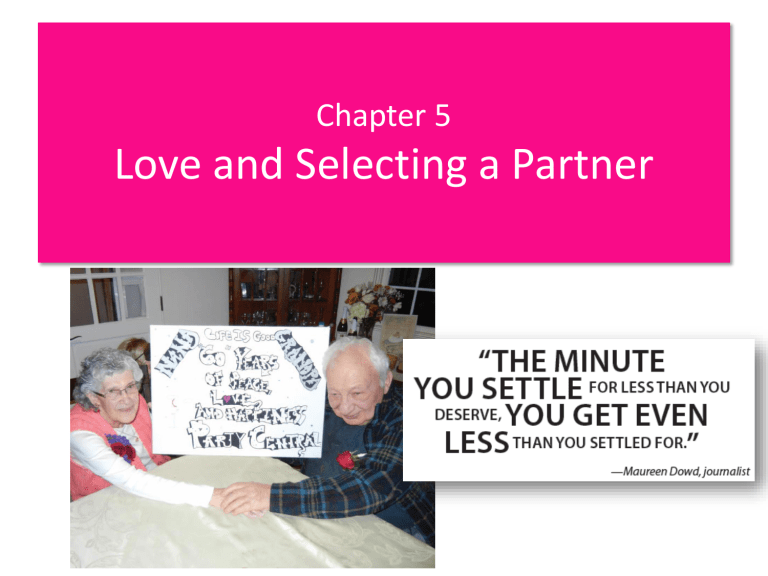
Chapter 5
Love and Selecting a Partner
Chapter Sections
• 5-1 Ways of Conceptualizing Love
• 5-2 Love in Social and Historical Context
• 5-3 How Love Develops in a New Relationship
• 5-4 Jealousy in Relationships
• 5-5 Cultural Restrictions on Whom an Individual Love or Marry
• 5-6 Sociological Factors Operative in Partnering
• 5-8 Sociobiological Factors Operative in Partnering
• 5-9 Engagement
• 5-10 Marrying for the Wrong Reasons
Ways of Conceptualizing Love
• Love involves deep, abiding feelings for the well-being of another with a focus on the long-term relationship.
• Lust is about sexual desires and focuses on the present.
• Infatuation is about emotional feelings based on little actual exposure to the love object.
Conceptualizing Love
Love Styles
• Ludic: views love as a game
• Pragma: logical and rational
• Eros: passion and romance
• Mania: obsessive jealousy and control
• Storge: calm friendship
• Agape: focus on well-being of love object
Style
Ludic
Storge
Mania
Agape
Pragma
Eros
Conceptualizing Love—Application
Match the style with the description
Description
Unconcerned about reciprocation
Extremely controlling
Avoiding involvement
Respect and friendship
Romantic
Need for security
Conceptualizing Love
• Conjugal (married) love: the love between married people characterized by companionship, calmness, comfort, and security
Conceptualizing Love
Sternberg’s Triangular Theory of Love
• 3 basic elements: intimacy, passion, and commitment
Conceptualizing Love
• Types of Love
– Nonlove: absence of intimacy, passion, and commitment
– Liking: intimacy without passion or commitment
– Infatuation: passion without intimacy or commitment
– Romantic love: intimacy and passion without commitment
Conceptualizing Love
• Types of love
– Conjugal love (companionate): intimacy and commitment without passion
– Fatuous love: passion and commitment without intimacy
– Empty love: commitment without passion or intimacy
– Consummate love: combination of intimacy, passion, and commitment
Love in Social and Historical Context
• The society in which we live controls our experience of love.
• Arranged marriage: mate selection pattern whereby parents select the spouse of their offspring
• Parents influence mate selection in the U.S. by moving to certain neighborhoods, joining certain churches, and enrolling in certain schools.
Love in Context
• About 90% of people marry someone of the same racial background.
• Only 8 states currently have laws protecting same-sex marriage.
Love in Context
• In medieval Europe, marriage was arranged and love was not tied to marriage.
• Love was conceptualized as an adoration of physical beauty and as spiritual and romantic.
• With the end of the feudal system, marriage became less a political and business arrangement and more a mutually desired emotional union.
Love in Context
• In colonial America, marriage was regarded as a business arrangement between fathers.
• Dowry (trousseau): included money and/or valuables that the girl’s father would pay the boy’s father
How Love Develops in a New
Relationship
• Our society promotes love through popular music, movies, and novels.
• The probability of being involved in a love relationship is influenced by the cultural ideal of physical appearance.
How Love Develops
Psychological Conditions for Love
• Perception of reciprocal liking
• Personality qualities
• Self-esteem
• Self-disclosure
• Gratitude
Eight Dimensions of Self-Disclosure
1. Background and History
2. Feelings toward the partner
3. Feelings toward self
4. Feelings about one’s body
5. Attitudes toward social issues
6. Tastes and interests
7. Money and work
8. Feelings about friends
Developing Love
• Arousal (strong physiological reactions when in the presence of the other) is associated with falling in love.
• Other factors associated with falling in love include appearance, common interests, and similar friends.
Jealousy in Relationships
• Jealousy: an emotional response to a perceived or real threat to an important or valued relationship.
• Types of jealousy
– Reactive: reaction to something
– Anxious: obsession with partner’s behavior
– Possessive: attacking the partner who is perceived as being unfaithful
Jealousy
• External causes of jealousy: behaviors of the partner interpreted as cause for jealousy
– Extradyadic relationship: emotional or sexual involvement between a member of a couple and someone other than the partner
Jealousy
• Internal causes of jealousy: characteristics of individuals that predispose them to jealous feelings
– Mistrust
– Low self-esteem
– Lack of perceived alternatives
– Insecurity
Jealousy
• Jealousy signifies that the partner is cared for and may solidify commitment.
• Jealousy can make the individual miserable and the partner irritated.
Cultural Restrictions on Love and
Marriage
• Endogamy: the cultural expectation to select a marriage partner within one’s social group
• Exogamy: the cultural expectation that one will marry outside the group
• Pool of eligibles: the population from which a person selects an appropriate mate
Sociological Factors Operative in
Partnering
Homogamy: individual initiative toward sameness
• Race
• Age
• Marriage squeeze: imbalance of the ratio of marriageable-age men to marriageable-age women
• Education
• Open-mindedness: receptive to understanding alternative points of view, values, and behaviors
Sociological Factors
Homogamy
• Social class
– Mating gradient: tendency for husbands to be more advanced than their wives with regard to age, education, and occupational success
• Physical appearance
• Career
• Marital status
Sociological Factors
Homogamy
• Religion/Spirituality/Politics
• Attachment
• Personality
• Economic values, money management and debt
Psychological Factors Operative in
Partnering
Complementary-Needs theory states that we tend to select mates whose needs are opposite and complementary to our own.
• Examples: dominant/submissive, responsible/irresponsibl e, disorder/ordered
Psychological Factors
Exchange theory emphasizes that mate selection is based on assessing who offers the greatest rewards at the lowest cost.
• The theory focuses on rewards, costs, profit, loss, and alternative.
• The principle of least interest states that the person who has the least interest in a relationship controls the relationship.
Psychological Factors
• Role (or modeling) theory of mate selection emphasizes that a son or daughter models the parent of the same sex by selecting a partner similar to the one the parent selected.
• Characteristics desired in a mate include warmth, kindness, sense of humor and education.
• Characteristics not desired include controlling, narcissistic, poor impulse control, and inflated ego.
Sociobiological Factors Operative in
Partnering
Sociobiology suggests a biological basis for all social behavior.
• Men look for a young, healthy, attractive, sexually conservative women who will produce healthy children.
• Women look for an ambitious man with good economic capacity who will invest his resources in her children.
Engagement
Engagement: period of time during which committed, monogamous partners focus on wedding preparations and systematically examine their relationship
• Ask specific questions
• Visit parents
• Participate in premarital education
Marrying for the Wrong Reasons
• Rebound
• Escape
• Unplanned pregnancy
• Psychological blackmail
• Insurance benefits
• Pity
• Filling a void
Wrong Reasons
Consider calling off the wedding if:
• Age 18 or younger
• Known partner less than two years
• Abusive relationship
• Numerous significant differences
• On-and-off relationship
• Parental disapproval
• Low sexual satisfaction
Chapter Summary
• There are different styles of loving.
• Sternberg’s Triangular theory of love points to various types of relationships.
• Love has not always been connected to marriage.
• A variety of conditions lead to the development of love.
• Jealousy has a number of causes and can be beneficial or detrimental to the relationship.
Chapter Summary
• Culture influences mate selection through endogamy and exogamy.
• We tend toward homogamy in partner selection.
• Exchange theory suggests we select those who reward us.
• Wrong reasons for marrying include unplanned pregnancy, escape, and being on the rebound.
Chapter Review
1. What are the different conceptualizations of love?
2. How has love been influenced by the social and historical context?
3. What are the conditions that lead to the development of love?
4. What are the causes and consequences of jealousy?
Chapter Review
5. How does society influence our partner choices?
6. What is homogamy?
7. What theories explain the psychology of mate selection?
8. How does sociobiology explain mate selection?
9. What are the wrong reasons for marrying?
